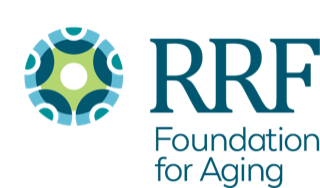Resilient Access to Social Connection for Lower-Income Older Adults
Tapping the Potential of the Built Environment
There is growing awareness of the benefits that accrue from designing environments to support social health and wellbeing, although there are still significant challenges to achieving desired outcomes. First, there is a lack of robust criteria and clear metrics, which are needed to evaluate design elements that impact social health. Second, the resiliency of these elements across different conditions (e.g., during normal times, during a pandemic, or during annual flu or norovirus outbreaks) has yet to be considered. This makes it difficult for policy makers, owners and designers to prioritize built environment features when budgets are tight, and resources are limited.
The innovation challenge lies in promoting social interaction while mitigating spread of infectious diseases.
Coalition Structure
Social health and wellbeing in affordable housing is not a new topic of study. However for years this topic has been addressed in silos, and little research has been dedicated to the role of the built environment, especially in the context of resilience. This pilot project builds on the previous work of six key institutions and their leaders who span independent and affordable senior living providers, and include design researchers, scientists, architects and designers, bringing them together in a novel coalition.
Coalition Collaborators
Aims and Outcomes
With the financial support of RRF Foundation for Aging, this pilot project’s aim is to develop a set of prioritized design criteria and potential metrics for the built environment of affordable independent living communities to achieve resilient access to social connection.
Process
Objectives and Activities of This Pilot Study
Create a coalition of six entities including affordable senior housing providers, design researchers, scientists and designers specializing in research of social health in low-income affordable housing.
Hire two master’s level student research scholars via this coalition to support the pilot study.
Conduct a literature review of existing evidence and review current affordable housing guidelines.
Understand stakeholder perspectives via staff focus groups (n=12) and resident surveys (n=146) from two low-income/affordable senior living independent housing examples and establish priorities using the paired comparison method
Synthesize findings into prioritized list of criteria cross-referenced against existing HUD guidelines to identify gaps and opportunities.
Conduct a 3-hour expert workshop with 5-6 specialists from affordable senior housing, HUD and architecture, engineering, construction (AEC) industries to share findings, and brainstorm how housing policy, funding and design, could achieve stakeholder needs in a safe and resilient way, with limited resources. Use the paired comparison method to rank priorities.
Conduct a three-hour expert workshop of three-four scientists specializing in spatial and environmental analytics to assess how the ranked design priorities can be quantified via clear metrics to help resource prioritization.
Translate findings into a) preliminary recommendations for affordable housing policy, b) a pilot tool for prioritizing and measuring design for social connection, and c) follow up actions/grant ideas by coalition participants.
research outcomes
Please fill out this form to download the project report.
Interested in collaboration?
If you would like to collaborate with us, please fill out the form below and one of our staff members will get back to you.




















